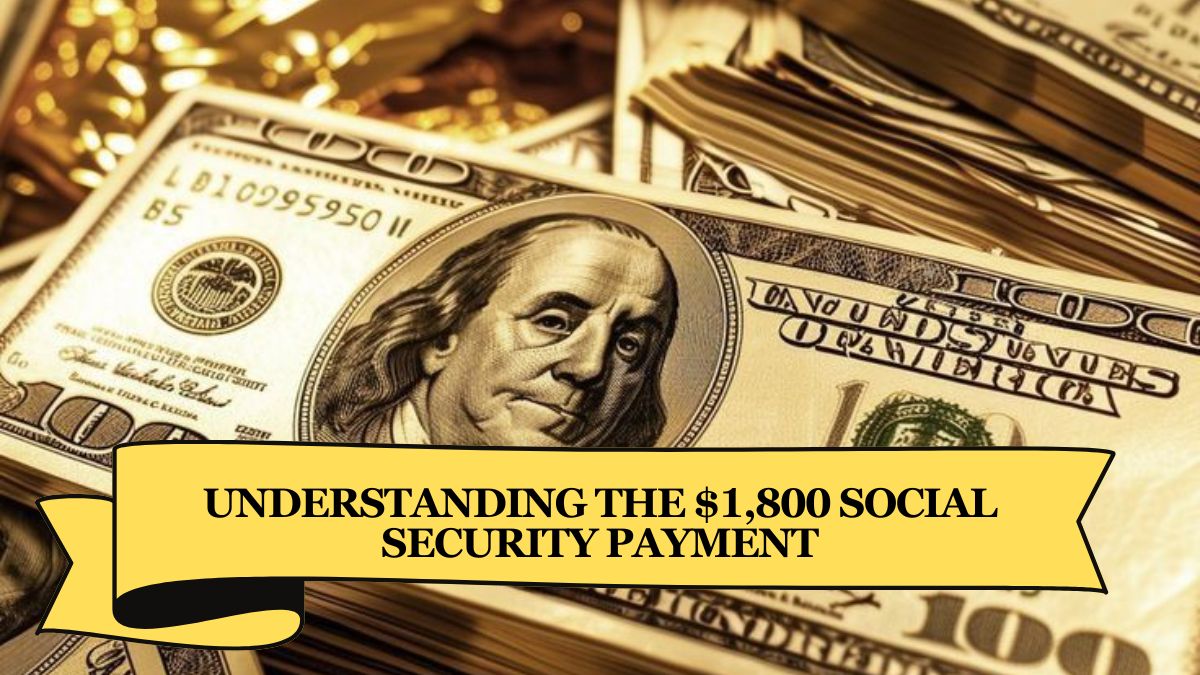Social Security is a vital source of income for retirees, disabled individuals, and survivors of deceased workers in the United States. Many recipients wonder how much they can expect to receive in benefits, and one commonly discussed figure is the $1,800 Social Security payment. This article explores what determines this amount, who qualifies, and how you can increase your monthly benefits.
What Is the $1,800 Social Security Payment?
The $1,800 Social Security payment refers to an estimated monthly benefit some retirees receive. However, actual payments vary based on factors such as lifetime earnings, the age at which benefits are claimed, and annual cost-of-living adjustments (COLA). The Social Security Administration (SSA) calculates each person’s benefits individually.
Factors That Determine Your Social Security Payment
Several factors affect whether you qualify for a $1,800 Social Security payment or a different amount:
1. Lifetime Earnings
Your Social Security benefit is based on your highest 35 years of earnings. Higher earnings result in higher benefits, up to the annual taxable wage limit set by the SSA.
2. Full Retirement Age (FRA)
Your FRA depends on your birth year. For example, if you were born in 1960 or later, your FRA is 67. Claiming benefits before FRA reduces your monthly payment, while delaying beyond FRA increases it.
3. Early or Delayed Retirement
- If you claim benefits at 62 (the earliest possible age), you may receive up to 30% less than your full benefit.
- If you delay benefits until 70, your payment can increase by 8% per year past FRA.
4. Cost-of-Living Adjustments (COLA)
Social Security payments adjust annually for inflation. The $1,800 Social Security payment may increase with COLA updates, ensuring that benefits retain their purchasing power over time.
How to Increase Your Social Security Payment
If your estimated benefit is lower than $1,800, consider these strategies to maximize your Social Security income:
1. Work for at Least 35 Years
Since the SSA calculates benefits based on your top 35 earning years, working longer and replacing low-earning years with higher-income years can boost your benefit.
2. Earn More Before Retirement
Increasing your income and paying more into Social Security taxes helps maximize your eventual benefit amount.
3. Delay Claiming Benefits
If possible, wait until 70 to claim benefits. The longer you wait beyond FRA (up to age 70), the higher your monthly check will be.
4. Consider Spousal and Survivor Benefits
Spouses can claim benefits based on their partner’s earnings, sometimes leading to a higher payment. Widows and widowers may also qualify for survivor benefits.
5. Check for Errors in Your Earnings Record
Review your Social Security statement annually to ensure your earnings are correctly reported. Errors can lead to lower payments.
Who Typically Receives a $1,800 Social Security Payment?
Not everyone qualifies for a $1,800 Social Security payment. Those who usually receive this amount include:
- Workers who consistently earned near or above the Social Security taxable wage limit for 35 years.
- Individuals who delayed claiming benefits beyond their FRA.
- People benefiting from COLA increases over time.
Conclusion
The $1,800 Social Security payment is attainable for some, but it depends on factors like earnings history, claiming age, and COLA adjustments. By planning strategically, maximizing earnings, and delaying benefits, you can increase your Social Security payment and secure a more comfortable retirement.
Must Visit: California State Online

